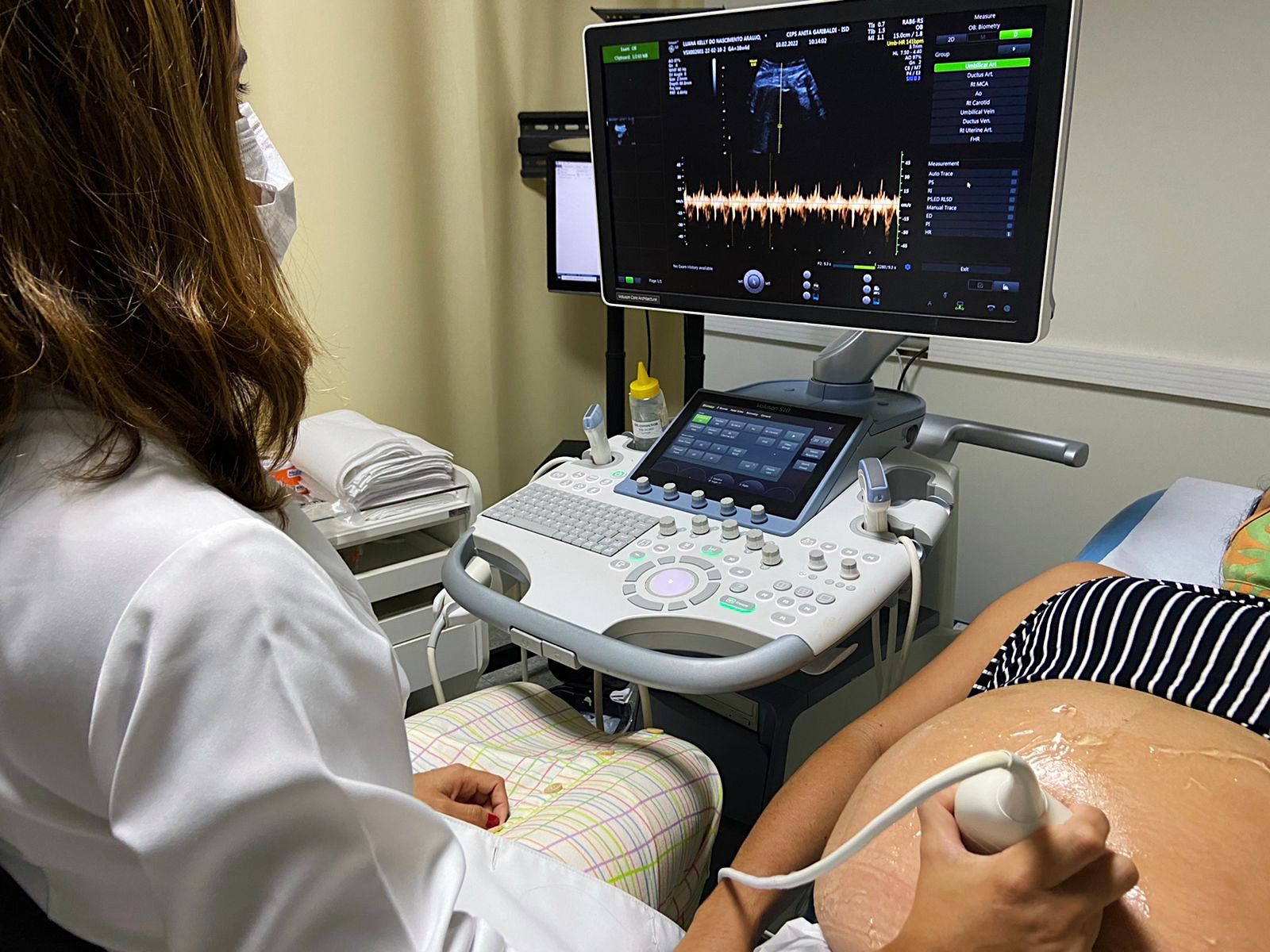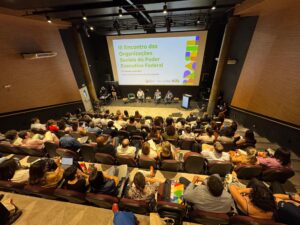In Brazil, one in every ten babies born alive are children or adolescents aged 10 to 19 years old, according to the Unified Health System (SUS). In Rio Grande do Norte, data from the State Department of Public Health (Sesap/RN) analyzed by the Santos Dumont Institute (ISD), detail the birth of 5,652 babies – from 2010 to 2021 – in this age group, which constitutes early pregnancy . Each year, these women gave birth, on average, to 471 boys and girls throughout the state of Rio Grande do Norte. This number, however, could be even higher if cases of maternal-fetal death and abortion were included in the calculation. This February, health authorities around the world draw attention to the risks involved in pregnancy among children and adolescents.
The number appears to be small in percentage, ranging from 1.2% to 0.7% of the total number of live births in the State over the years analyzed. However, it raises the alarm about possible violations of the rights of girls and adolescents who start to play a mother's role while they should dedicate themselves exclusively to studies. Despite the general decrease in the percentage of babies born to teenagers, the situation still presents relatively high rates, especially involving the pregnancies of girls between 10 and 14 years old.
“The data seems low but it means high numbers of a pregnancy considered early and it is necessary to think about the type of relationship that is established for the pregnancy to happen. They may even be consensual relationships, but, legally, we cannot consider the consent of a person who is unattributable from a legal point of view”, explains ISD's multi-professional social worker preceptor, Alexandra Lima.
The Ministry of Health, as well as the World Health Organization (WHO), define adolescence as the period from 10 to 19 years old, a cycle that consists of the transition from childhood to adulthood and involves several changes and constant adaptations. Among the health issues in this age group, pregnancy has been a challenge, as the chances of complications occurring during pregnancy are greater.
At the Anita Garibaldi Health Education and Research Center (Anita), one of the ISD units in Macaíba, there are numerous cases of teenage pregnancy monitored, as the unit is a reference in high-risk prenatal care in the state. “We have received pregnant teenagers on a recurring basis and the situations experienced are countless, from a girl becoming pregnant by a boyfriend of the same age or two/three years older, to the absurdity of a 14-year-old girl becoming pregnant by a 42-year-old man. specific case was reported as sexual violence, because especially when the teenager is under 14 years old, the relationship is considered, by law, rape of a vulnerable person”, highlights Alexandra Lima
Retreat
Despite the alarming number of pregnancies of girls under 14 years of age, there was a drop of 32.6% in the number of live births to mothers aged 10 to 19 years from 2010 to 2021 in Rio Grande do Norte. The numbers were analyzed by the obstetrician specializing in fetal medicine and general director of the Santos Dumont Institute (ISD), Reginaldo Freitas Jr.
In 2010, there were 9,822 babies born to mothers in this age group. The number fell over the years until, in 2021, it reached 5,749 births of children to teenage mothers reported in RN. However, the number does not include all cases of teenage pregnancy in the state of Rio Grande do Norte, as it only considers live births and disregards complications such as abortion or maternal-fetal death.
“Despite the underreporting, as this account does not include cases in which the baby is not born alive, for example, this decline is important and positive. However, the occurrence of teenage pregnancies is still considered high in the eyes of social indicators around the world and the reduction in recent years cannot be considered a great victory. We still have a lot to do, especially disseminating access to information and educational strategies in sexual and reproductive health”, argues Reginaldo Freitas Jr.
The Brazilian rate of teenage pregnancy is considered high: the rate is 68.4 births for every thousand adolescents between 15 and 19 years old, according to the report from the Pan American Health Organization (PAHO), while the world average is estimated at 46. For Reginaldo Freitas Jr., if every pregnancy should, ideally, be taken care of from conception, adolescence should be no different.
“We are talking about a stage of life where these girls are exposed to greater perinatal risk. The occurrence of teenage pregnancy is associated with much more unfavorable perinatal conditions, such as hypertensive syndromes, prematurity and low birth weight, which occur more frequently in pregnancies of girls in this teenage age group”, explains the obstetrician. Teenage pregnancy is a public health problem due to the health risks to the mother and baby, which also include anemia, miscarriage, eclampsia and postpartum depression, for example.
According to Reginaldo Freitas Jr., the justification for the high rates of teenage pregnancy involves very broad issues, from socioeconomic and cultural level to early sexual initiation. The lack of knowledge about contraceptive methods, the difficulty in accessing this health policy and even the lack of partner participation in preventing pregnancy are also some of the reasons.
“It is important to consider that, often, teenagers really want to get pregnant and have this as their life goal. However, our challenges are to make them understand that each phase needs to be experienced in its own time and, perhaps, see other possibilities, build a society that guarantees citizenship for boys and girls, in addition to not criminalizing or abhorring cases of pregnancy. in adolescence and, yes, provide all the necessary care for these lives”, argues Reginaldo Freitas Jr.
ISD pedagogue, Luzia Guacira dos Santos Silva, assesses that the main educational loss of early mothers is related to dropping out of school. “Many children and teenagers who become pregnant end up abandoning student life because of the new life dynamics”, he emphasizes.
Prevention
One of the most important factors for prevention is education. Regarding the ideal period to approach the subject with adolescents, of both sexes, Reginaldo Freitas Jr. states that there is no magic formula regarding an appropriate age to approach the subject and this moment is linked to the cultural, social and family context of the adolescents. of teenagers.
“For optimal prevention of teenage pregnancy, education strategies should take place as soon as there is a desire to begin sexual activity. When a teenager makes the decision that she will begin sexual activity, this decision should also include knowledge of her sexual and reproductive rights, including family planning and planning when to get pregnant”, she highlights.
To strengthen the prevention of teenage pregnancy cases, nine contraceptive methods that help with family planning are offered by the SUS, free of charge, to this population: monthly injectable contraceptive, quarterly injectable contraceptive, mini pill, combined pill, diaphragm, contraceptive pill emergency (or morning-after pill), intrauterine device (IUD), female condom and male condom.
At the Santos Dumont Institute (ISD), maternal and child health care includes high-risk prenatal care, specialized assistance for pregnant women and children exposed to and/or with HIV/AIDS, fetal medicine, infectious disease during pregnancy, assistance for victims of sexual violence , psychology, social assistance and others. In addition, women monitored by the Institute's service receive guidance on contraception and family planning, to decide if and when they want to get pregnant.
Live births to mothers aged 10 to 19 years in RN
Number/percentage relative to the total number of births
2010 – 9.822 / 20,5%
2011 – 9.929 / 20,6%
2012 – 9.744 / 20,7%
2013 – 9.744 / 20,8%
2014 – 9.602 / 19,9 %
2015 – 9.446 / 19,2%
2016 – 8.758 / 19,2%
2017 – 8.230 / 17,9%
2018 – 7.792 / 16,2%
2019 – 6.982 / 15,5%
2020 – 6.213 / 14,2%
2021 – 5.749 / 13,8%
Live births to mothers aged 10 to 14 years in RN
Number/percentage relative to the total number of births
2010 – 565 / 1,2%
2011 – 593 / 1,2%
2012 – 562 / 1,2%
2013 – 538 / 1,1%
2014 – 508 / 1,1 %
2015 – 574 / 1,2%
2016 – 479 / 1,1%
2017 – 407 / 0,9%
2018 – 429 / 0,9%
2019 – 378 / 0,8%
2020 – 322 / 0,7%
2021 – 297 / 0,7%
Source: Sesap/RN
Text: Kamila Tuênia / Ascom – ISD
Photograph: Ricardo Araújo / Ascom – ISD
Communication Office
comunicacao@isd.org.br
(84) 99416-1880
Santos Dumont Institute (ISD)
It is a Social Organization linked to the Ministry of Education (MEC) and includes the Edmond and Lily Safra International Institute of Neurosciences and the Anita Garibaldi Health Education and Research Center, both in Macaíba. ISD's mission is to promote education for life, forming citizens through integrated teaching, research and extension actions, in addition to contributing to a fairer and more humane transformation of Brazilian social reality.













